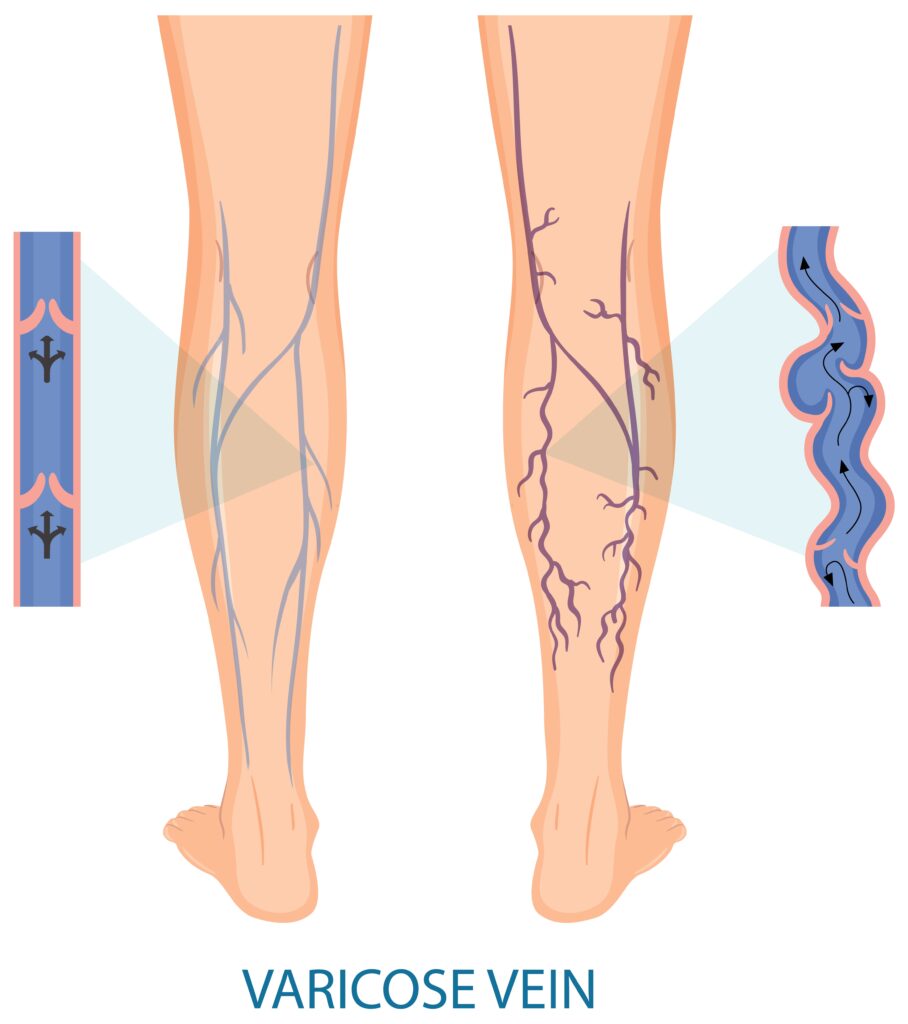Health care
Empower Yourself: Effective Strategies for Self-Managing Varicose Veins
Varicose veins are a common condition that affects many individuals. They are enlarged, twisted veins that often appear dark purple or blue and are visible beneath the skin. While they can occur in any part of the body, they most commonly appear on the legs and feet. Varicose veins are caused by weakened valves and veins, which result in poor blood flow. This condition can be uncomfortable and may lead to complications if left untreated.

Symptoms and Causes of Varicose Veins
There are several symptoms associated with varicose veins, including aching, throbbing, and a feeling of heaviness in the legs. Individuals may also experience swelling, muscle cramps, and dry, itchy skin around the affected area. Varicose veins can be caused by a variety of factors, including genetics, pregnancy, obesity, and prolonged standing or sitting. Hormonal changes and age can also contribute to the development of varicose veins. Understanding the underlying causes and recognizing the symptoms is crucial for effective self-management.
The Importance of Self-Management for Varicose Veins
Self-management plays a pivotal role in effectively managing varicose veins. By taking control of your condition, you can alleviate symptoms, prevent further complications, and improve your overall quality of life. Self-management involves making lifestyle changes, incorporating exercise and physical activity, utilizing supportive measures such as compression stockings, following a healthy diet, and exploring natural remedies and alternative therapies. By implementing these strategies, you can significantly reduce the impact of varicose veins on your daily life.
Lifestyle Changes for Self-Managing Varicose Veins
Making certain lifestyle changes can greatly assist in self-managing varicose veins. It is essential to maintain a healthy weight, as excess weight can put additional strain on the veins. Engaging in regular physical activity, such as walking or swimming, improves blood circulation and helps prevent the progression of varicose veins. Avoiding prolonged periods of sitting or standing and elevating your legs when possible can also alleviate symptoms. Additionally, wearing loose-fitting clothing and avoiding tight belts or waistbands can help improve blood flow in the affected areas.
Exercise and Physical Activity
Engaging in specific exercises and physical activities can have a positive impact on varicose veins. Low-impact exercises, such as cycling and yoga, are highly recommended as they promote blood circulation and strengthen the leg muscles. Walking is also an excellent form of exercise, as it helps pump blood back up to the heart and reduces swelling in the legs. It is crucial to consult with a healthcare professional or a certified trainer to determine the most suitable exercises for your condition.
Compression Stockings and Other Supportive Measures
Compression stockings are a widely used method for managing varicose veins. These stockings apply pressure to the legs, improving blood flow and reducing swelling. They come in various levels of compression, so it is essential to consult with a healthcare professional to determine the appropriate level for your condition. Additionally, elevating your legs above heart level for short periods throughout the day can help relieve symptoms. Avoiding tight clothing, high heels, and crossing your legs can also aid in managing varicose veins.
Varicose Veins Dietary Recommendations
Maintaining a healthy diet is essential for self-managing varicose veins. Consuming foods rich in fiber, such as fruits, vegetables, and whole grains, can prevent constipation and improve overall circulation. Additionally, incorporating foods high in antioxidants, such as berries and leafy green vegetables, can strengthen blood vessels. It is crucial to limit salt intake, as excessive sodium can lead to water retention and worsen swelling. Staying hydrated by drinking an adequate amount of water throughout the day is also beneficial for improving blood flow.
Natural Remedies and Alternative Therapies
In addition to lifestyle changes and supportive measures, there are several natural remedies and alternative therapies that can complement self-management of varicose veins. Herbal supplements, such as horse chestnut extract and grape seed extract, have shown promising results in reducing pain and swelling associated with varicose veins. Essential oils, such as lavender and cypress, can be used topically to alleviate discomfort. Alternative therapies, including acupuncture and massage, can also provide relief. It is important to consult with a healthcare professional before trying any natural remedies or alternative therapies.
When to Seek Professional Help
While self-management strategies can be effective, there are instances where professional help may be necessary. If your varicose veins cause severe pain, bleeding, or skin ulcers, it is important to consult with a healthcare professional. They can provide further evaluation, recommend appropriate treatment options, and help prevent complications. Additionally, if self-management strategies do not improve your symptoms or if they worsen over time, seeking professional help is crucial.
Conclusion:
Self-management is key to effectively managing varicose veins and improving your overall well-being. By understanding the condition, recognizing the symptoms, and implementing lifestyle changes, exercise, supportive measures, and a healthy diet, you can take control of your varicose veins. Exploring natural remedies and alternative therapies can also complement your self-management strategies. However, it is important to consult with a healthcare professional for guidance and to determine the most suitable approach for your specific condition. By empowering yourself and actively managing your varicose veins, you can enjoy a better quality of life.